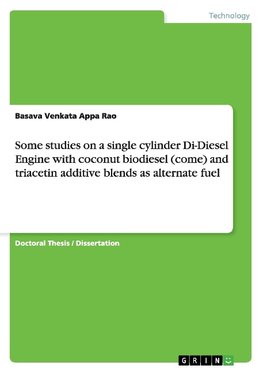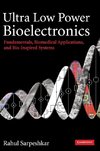
-
 Anglický jazyk
Anglický jazyk
Some studies on a single cylinder Di-Diesel Engine with coconut biodiesel (come) and triacetin additive blends as alternate fuel
Autor: Basava Venkata Appa Rao
Doctoral Thesis / Dissertation from the year 2010 in the subject Engineering - Power Engineering, Andhra University (AU College of Engineering), course: Mechanical, language: English, comment: Best Researcher awarde and Senior Professor, abstract: Diesel... Viac o knihe
Na objednávku, dodanie 2-4 týždne
41.67 €
bežná cena: 46.30 €
O knihe
Doctoral Thesis / Dissertation from the year 2010 in the subject Engineering - Power Engineering, Andhra University (AU College of Engineering), course: Mechanical, language: English, comment: Best Researcher awarde and Senior Professor, abstract: Diesel engine emits more pollutants which are detrimental to the human health. Pollution control boards around the world made it mandatory to reduce the tail pipe emissions. Research on emission control is in full swing and several alternative fuels have been tested to reduce emissions. Especially cold combustion in diesel engines is in focus. Low temperature combustion is contemplated to reduce some of the dangerous emissions like NOx. Biodiesel fuel reduces most of the pollutants except NOx. Hence testing with higher latent heat alcohols as secondary fuels in dual fuel injection strategy is mooted. Fumigation of alcohol is one of the techniques to induct alcohols in suction side along with the incoming air. Carburetion and real time injection were also tested but there is certain amount design change of the engine is needed with the implementation of these new techniques. In this thesis, major design changes are not contemplated and introduction of smaller retrofits is mooted. And among the alcohols, methyl alcohol is tested along with biodiesel in the dual fuel operation. Even in the selection of biodiesel, priority has been given to Coconut biodiesel (COME) since it is more saturated ester than the esters in fray. One can observe ubiquitous coconut plantation in the urban side as well as in the rural side in India. COME is injected through the conventional nozzle and a separate electronic injector is used as retrofit to inject methanol at the suction end after the complete opening of the suction valve.
Methanol is quantified with respect to the 1kg/hr ester and corresponding gravimetric percentages have been calculated. 3%, 5%, 7%, 10% of gravimetric proportions have been maintained for the injection of methyl alcohol at the suction end.
This dual fuel combination has yielded better results with 5% methanol injection and COME injection on a single cylinder laboratory based four stroke cycled DI- Diesel engine.
5% methanol injection in dual fuel injection has produced NO emission reasonably lower with consistent rise in its value with respect to increase in load.
5% methanol injection with biodiesel in dual fuel operation yielded good results at higher loads.
It is interesting to note that at 5% alcohol injection, the HC emission is lower and consistent with minimum change in its value as the load is increasing.
In the case of 5% methanol injection, the exhaust gas temperatures are at all loads indicating better defused combustion which prolongs for
- Vydavateľstvo: GRIN Verlag
- Rok vydania: 2014
- Formát: Paperback
- Rozmer: 210 x 148 mm
- Jazyk: Anglický jazyk
- ISBN: 9783656744962











 Nemecký jazyk
Nemecký jazyk 